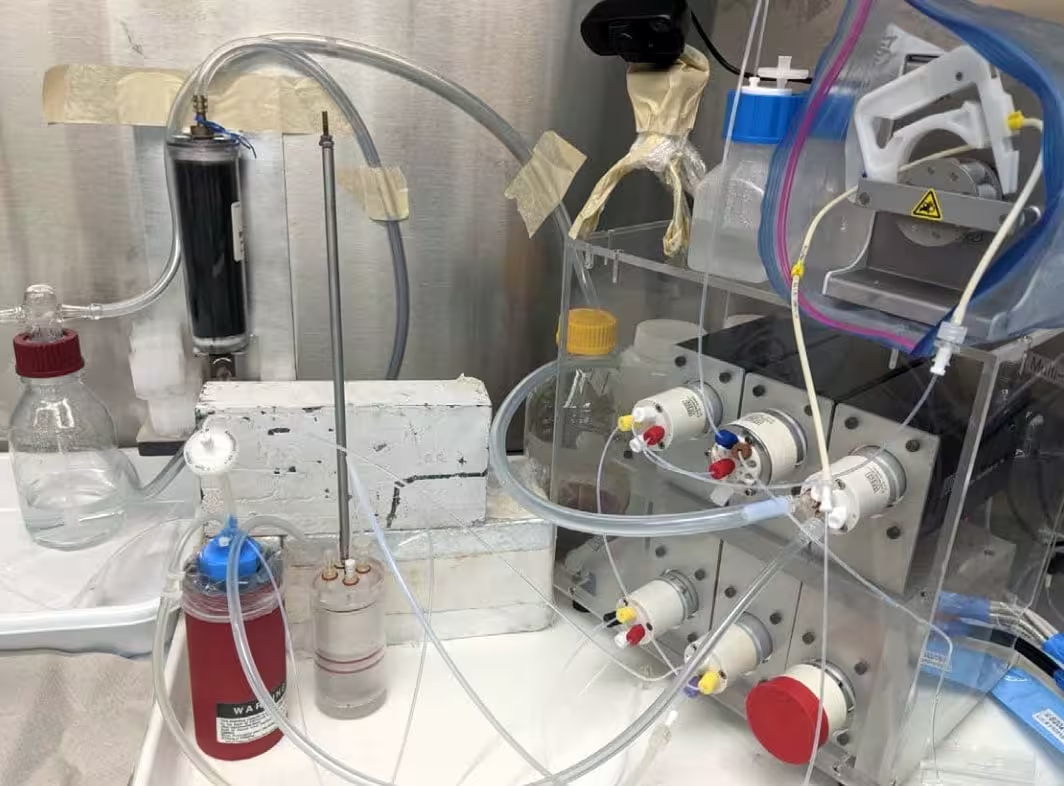6 Minutes
Texas A&M researchers are turning one of the periodic table’s most elusive substances into a promising weapon against cancer. Through cyclotron production and novel chemistry, astatine-211 (At-211) is moving from laboratory curiosity to a viable radiopharmaceutical candidate for targeted alpha therapy.
Why astatine-211 matters: the alpha advantage
Astatine-211 is among Earth’s rarest naturally occurring elements and has long been avoided by researchers because of its fleeting existence—the isotope’s half-life is only about 7.2 hours. Yet that apparent weakness is precisely what makes At-211 so attractive for cancer treatment. When At-211 decays it emits alpha particles: compact, highly energetic bundles of two protons and two neutrons that deposit their destructive energy over a very short distance.
For clinicians and radiochemists, that short travel distance is a crucial property. Alpha particles can obliterate targeted tumor cells while sparing surrounding healthy tissue, reducing collateral damage common to other forms of radiation therapy. Unlike beta emitters or longer-lived isotopes that can spread radiation more broadly, At-211’s alpha emissions are concentrated, potent, and, because of the isotope’s rapid decay, less persistent in the body.
From cyclotron beam to clinic: producing and purifying At-211
Scaling At-211 from a scientific novelty to a practical medical isotope requires overcoming difficult production and logistics challenges. Texas A&M University’s Cyclotron Institute has been refining a full workflow: producing At-211 with a K150 cyclotron, chemically separating it from the bismuth target, and preparing it for transport to research hospitals and pharmaceutical labs.
One notable breakthrough from the team is a patent-pending, automated resin-column system that speeds the separation and loading process. By trapping the astatine on a resin column and shipping the loaded column, producers can move larger amounts of At-211 with reduced decay losses and lower handling risk. Faster separation means more usable isotope arrives at clinical sites within the window where its therapeutic properties are strongest.

A team at Texas A&M University has developed an automated system for separating and shipping At-211. This patent-pending device enables the radioisotope to be purified and loaded as part of the process to incorporate it into a targeted alpha therapy drug. This new approach allows isotope producers to ship larger quantities of At-211 with less risk and less decay, further promoting its feasibility as a possible next-generation cancer treatment. Credit: Texas A&M University Cyclotron Institute
Clinical potential and early applications
Researchers and clinicians are especially excited about targeted alpha therapy (TAT) because it can deliver lethal damage at the single-cell level. At-211 is being tested in preclinical and early clinical studies for hematologic cancers and other hard-to-treat malignancies. Its chemistry also shows promise in conjunction with antibody- or peptide-based targeting agents that guide the isotope directly to tumor cells.
Because At-211 does not produce long-lived daughter isotopes that continue to emit radiation, it represents a safer profile for many therapeutic uses. That relative safety, combined with the isotope’s destructive power at short range, is driving interest from radiation oncologists, nuclear medicine specialists, and pharmaceutical companies aiming to develop next-generation radiopharmaceuticals.
Collaboration and distribution: building an At-211 supply chain
Availability has been the principal bottleneck for At-211. To confront this, Texas A&M has been working within national networks—supported by the U.S. Department of Energy (DOE) Isotope Program and the National Isotope Development Center—to supply medically relevant quantities of the isotope. Since 2023, Texas A&M has been one of only a couple of U.S. institutions authorized to distribute At-211 for research and therapeutic development through the University Isotope Network.
The Cyclotron Institute has already delivered significant batches of At-211 to collaborators, including the University of Alabama at Birmingham and the MD Anderson Cancer Center, where multiple shipments have supported radiopharmaceutical development. These collaborations help refine labeling chemistry, biodistribution studies, and dosing strategies required to bring At-211 therapies into broader clinical trials.
Scientific context and technical hurdles
Producing At-211 involves bombarding a bismuth target with alpha particles inside a cyclotron to transmute bismuth into astatine. The chemistry to extract and stabilize the asteroid-like element is complex: astatine’s chemistry is unusual and sometimes behaves like a heavy halogen, but it also exhibits metallic tendencies under certain conditions. That dual nature complicates radiolabeling chemistry and requires specialized ligands and linking strategies to attach At-211 securely to biological targeting molecules.
In addition, At-211’s short half-life forces rapid coordination between production, purification, radiolabeling, and patient administration. Improvements in automated processing, like Texas A&M’s resin-column approach, reduce delay and decay loss—but they also demand strict quality controls, traceability, and logistics expertise to ensure safe delivery to hospitals within the isotope’s usable timeframe.
Expert Insight
“Astatine-211 is a striking example of how a material once deemed impractical can become clinically transformative when production and chemistry catch up,” says Dr. Elena Morales, a fictional medical physicist specializing in radiopharmaceuticals. “The short half-life is both a logistical challenge and an advantage: it limits systemic exposure while concentrating therapeutic power at the tumor. Advances in automated purification and rapid labeling are the missing pieces that now make human trials realistic.”
What’s next: trials, manufacturing scale-up, and regulatory steps
Moving At-211 therapies into routine clinical use will require larger-scale production, standardized radiochemistry kits for clinical sites, and well-designed clinical trials to evaluate safety and efficacy across cancer types. Regulatory pathways for novel radiopharmaceuticals involve rigorous dosimetry studies and multi-center trials. International efforts—active programs in Japan and Europe, along with the United States—are converging on common goals: optimize targeting agents, demonstrate meaningful patient outcomes, and establish sustainable supply chains.
Researchers at Texas A&M and partner institutions are presenting methods and results at community gatherings such as the World Astatine Community Meeting and the International Symposium on Radiopharmaceutical Sciences, sharing protocols and supply strategies. Those exchanges help translate cyclotron outputs into clinical-grade doses while ensuring that hospitals and trial sites can handle At-211 safely and effectively.
As production technologies improve and partnerships broaden, At-211 may transition from a niche experimental isotope to a mainstream tool in nuclear medicine—especially in situations where precise, high-energy, short-range radiation can eliminate microscopic disease without large-scale collateral harm.
Source: scitechdaily
Comments
Tomas
is this even scalable tho? 7.2 hr half life sounds like a nightmare for distant hospitals, plus that weird chemistry, who does QC? curious but skeptical
labcore
wow this blew my mind, astatine as a tiny alpha weapon against tumors? if they nail logistics it could be a gamechanger, wild stuff


Leave a Comment